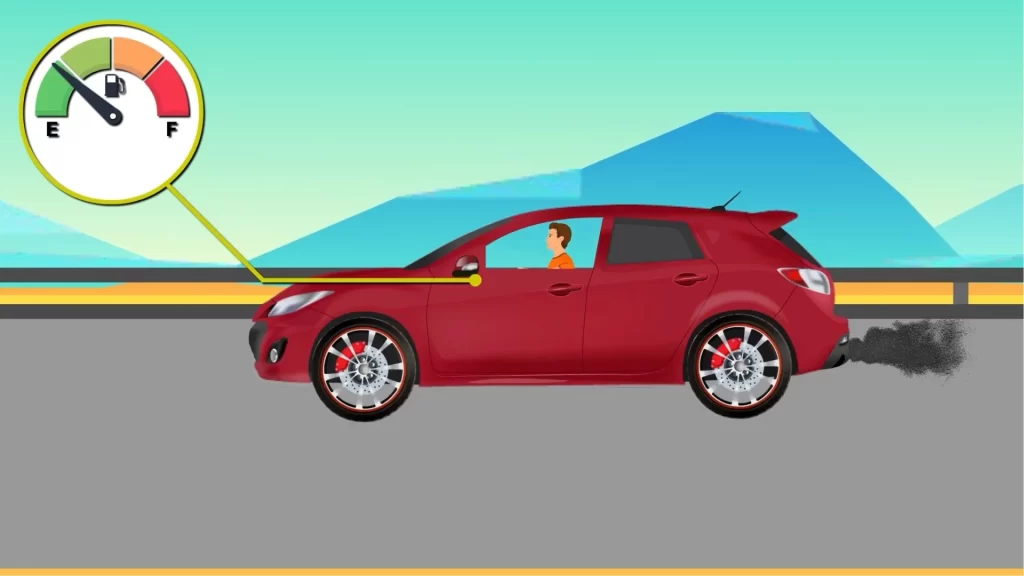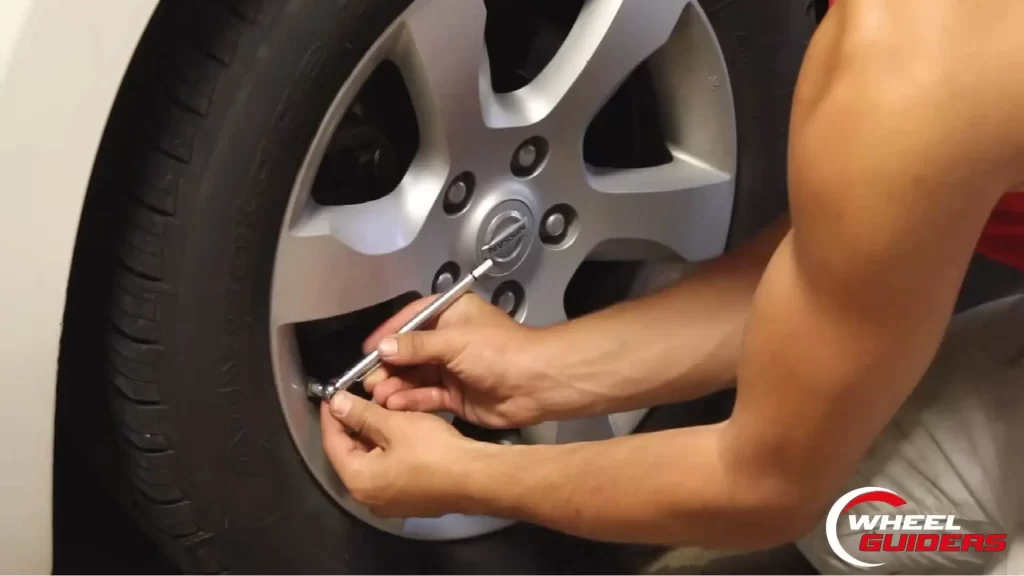Why Does Gas Mileage Drop With New Tires?
It can be frustrating when your vehicle’s fuel efficiency drops, especially when you just get your brand-new tires. If you thought to yourself, “Why me?”, well you are not alone in this. This issue has been a topic of discussion among many drivers.
Why Does Gas Mileage Drop With New Tires? New tires can temporarily reduce fuel efficiency due to their deeper tread depth, which increases rolling resistance. The rubber compounds in new tires are also less worn, which can lead to slightly higher friction. As tires break in and the tread wears down, fuel efficiency typically improves
Gas mileage can break or make your pocket, haven’t we all been through that? “Why does gas mileage drop with new tires?” is a common question among vehicle owners who notice changes in fuel efficiency right after mount new tires.So, Stick with us as we explain what to expect and more importantly, what to do when such a thing happens.
What Is Rolling Resistance?
Rolling resistance refers to the energy needed for a vehicle to maintain a steady speed. Energy is transferred in the form of either electricity or gas to the engine of your vehicle and all the other systems.
This is what gets your tires to move and this occurs due to momentum that builds within the vehicle. Although there are a lot of hurdles that your automobile must overcome and one of those factors is rolling resistance.

Simply put, this is the required effort that causes your tires to roll, to move. Hysteresis is a main contributor to rolling resistance.
(Hysteresis is the energy loss that happens when a tire rolls through its footprint). Fuel is consumed to compensate for hysteresis by consuming fuel and this in turn results in a drop in gas mileage.
Do New Tires Need To Be Broken In?
Just like your uncomfortable shoes that need to be broken in. When tires are broken in, they provide you with their utmost performance. Just like your shoes that are made up of multiple layers, so are your tires.
Your tires are made up of steel, rubber, and about 200 more raw materials. When tires are manufactured, during the process, they are painted with a release lubricant. This prevents the tires from adhering to the mold. Because these tires are untouched, these lubricants cling to the surface of your tires.
So, when you drive in these new tires, sticky lubricants wear off to provide you with the experience they are supposed to provide you.
What is the duration required for a new tire to break in?
500 miles is the average amount of distance that is required to break your new, shiny tires. Only with patience and time, you will find that your inexperienced tires will soon be able to handle themselves like pros.
With babies, you have to be patient, new tires are newborn babies. Initially, they will take a little more time to respond to your commands. Tires with a lower tread react or respond much more quickly, this is the criteria.
Why does Rolling Resistance go up With New Tires?
This is because the rubber in the new tires, and their treads have a much better grip. This causes a spike in resistance than the usual amount of resistance that tires require.
The higher the resistance, the higher amount of fuel consumed in order for the car to keep moving forward.
Is Tire Rolling Resistance Preventable?
Rolling resistance is unavoidable and cannot be entirely prevented. Energy cannot be stopped or escaped, it is bound to happen. However, it is possible to minimize rolling resistance through various means.
Since hysteresis is the cause of rolling resistance, tires can be produced by utilizing different thread compounds. These specific compounds tend to proffer immense resistance to pressure and the heat that is generated. These tires are called low-rolling resistance tires.
How much does the mileage decrease with new tires?
By now, you know that new tires simply generate more rolling resistance than your old, worn-out tires. A 10% increase in tire rolling resistance is equated to a 1 – 2% decrease in the efficiency of vehicle fuel as estimated by the automotive experts. This is doubled when you have purchased new tires. Overall, expect a 2-4% decrease in mpg.
Benefits of Using Low Rolling Resistance Tires
Low-rolling resistance tires offer numerous advantages.
- They should be considered as an investment if you want to optimize your vehicle’s fuel economy.
- According to the United States Department of Energy Research, one can save about 8 % of fuel when in comparison to regular tires.
- It is an economically sustainable option because of the low amount of fuel consumption.
What are the factors of new tires that influence mileage?
When pondering over the question, “Why does gas mileage drop with new tires?”, it’s essential to consider factors such as tire tread depth, tread design, compound and construction and much more.So let’s dive into the factors and understand them.
tread depth
The rolling resistance of any tire is caused by the tread of your tire. Tread depth does affect your consumption of fuel as well. Sallower treads consume less amount of fuel than tires that have bigger treads. Newer tires usually have bigger treads when compared to older ones.
Tire Tread Design
Tire tread designs often vary from tire to tire, which is why it is important that you find tires with the right tread design. A shallow tread rib design allows your vehicle to be fuel efficient instead of deeper tread designs. If you notice, off-road tires have a deeper tread pattern, but that kind of tread only caters to off road handling. These tires also consume a larger quantity of fuel.
Tire Compound and Construction
The raw materials used in your tires and the technique used to construct them play an important role. If it sounds like you are baking a pie, you are right. It is quite similar. Various ingredients come together to give out particular characteristics that are expected from tires. For example, silica-enriched compounds, carbon black, and natural rubber are some of the raw materials that improve the fuel efficiency of a tire.
Inflation Pressure
Proper inflammation can actually help you improve fuel efficiency. A 20% underinflated tire can cause your vehicle to consume at least 10% more fuel as it dispenses more resistance.
Road Conditions and Terrain
If you have had to go through bumpy car rides that are extremely uncomfortable, then you know that it must be even more uncomfortable for your tires. In fact, it is an understatement because of the damage improper roads with potholes and rough patches cause. If the terrain you drive on is rocky, with a lot of hurdles, naturally your vehicle consumes more fuel to get past these hurdles.
Vehicle Weight and Load
When a vehicle is heavier or carrying a lot of stuff, it puts more strain on the tires, making it harder for them to roll smoothly. This extra strain increases the amount of fuel needed to move the vehicle, which means it becomes less fuel-efficient. To improve fuel economy and make the tires last longer, it’s important to manage the vehicle’s weight and load properly.

Wheel Alignment and Balancing
Getting your wheel alignment right is essential for both your wallet and your car’s health. Improper alignment not only causes uneven tire wear but also forces your vehicle to work harder during steering, leading to increased fuel consumption.
Similarly, improper wheel balance can reduce traction, resulting in decreased fuel efficiency. By ensuring proper wheel balancing, you can save up to 2.2% of fuel, making it a cost-effective way to enhance your vehicle’s fuel economy.
Tips And Tricks To Improve Fuel Efficiency
Driving Efficiently
Drive as evenly as possible. Try to not go hard on the acceleration and braking. According to consumer reports, regular bursts of acceleration and braking significantly reduced an average car’s mileage by 2-3 mpg. Maintain a consistent speed and try to foresee and predict the movement of other vehicles and traffic for safety measures.
Regular Vehicle Maintenance
Regular vehicle maintenance plays a vital role in optimizing tire fuel efficiency. Properly maintaining tire inflation, alignment, and balance decreases rolling resistance, which directly affects fuel consumption.

Additionally, well-maintained tires provide better traction, resulting in smoother and more fuel-efficient rides. Neglecting maintenance can lead to premature tire wear, decreased fuel economy, and potential safety issues on the road.
Proper Tire Inflation
Your mileage can be improved by 0.6-3.0% on average by properly inflating tires. These tires should be inflated according to the recommended psi. Overinflated or underinflated tires can surely cause fuel inefficiency.
Reduce Excess Weight
Reducing excess weight in your vehicle can significantly impact fuel efficiency. Carrying unnecessary items in your car puts extra strain on the engine and tires, requiring more fuel to move the added weight. Every 100 pounds of excess weight can lead to a decrease in fuel economy by about 1-2%.
Plan Efficient Routes
Planning ahead is a smart decision. Efficient routes are routes where the traffic is minimum, do not include harsh and rough road conditions, and overall provide a smoother ride.

Sometimes shorter trips are best and consume less fuel, sometimes shorter routes have traffic or hurdles that contradict this very point. Be wise, make smart decisions, and be efficient.
Choose High Quality Fuels
Selecting high-quality fuels can positively impact fuel efficiency and tire performance. Premium or higher-grade fuels often contain better additives and cleaner components, promoting smoother combustion and reducing carbon deposits that can affect engine efficiency and tire wear.
Opting for reputable brands and quality fuels ensures a cleaner burn, which can translate to improved mileage and reduced engine strain, benefiting both your vehicle’s fuel economy and tire longevity.
Departing Words
Fuel efficiency is very important. Try to opt for low rolling resistance tires, drive safely, check your vehicle for anomalies, and make sure to keep all or at least some of the factors in mind to save gas and the planet Earth.
Some drivers find themselves puzzled, asking, “Why does gas mileage drop with new tires, even though they are supposed to enhance performance? The temporary reduction is due to increased rolling resistance and it improves over time with proper tire break-in.
Manufacturers often advise drivers to maintain proper tire inflation to minimize any potential reduction in gas mileage after tire replacement. This is a tip that addresses the question at hand “Why does gas mileage drop with new tires”.
Overall, understanding why gas mileage drops with new tires empowers drivers to optimize their driving habits and maintenance routines to achieve better fuel efficiency.
